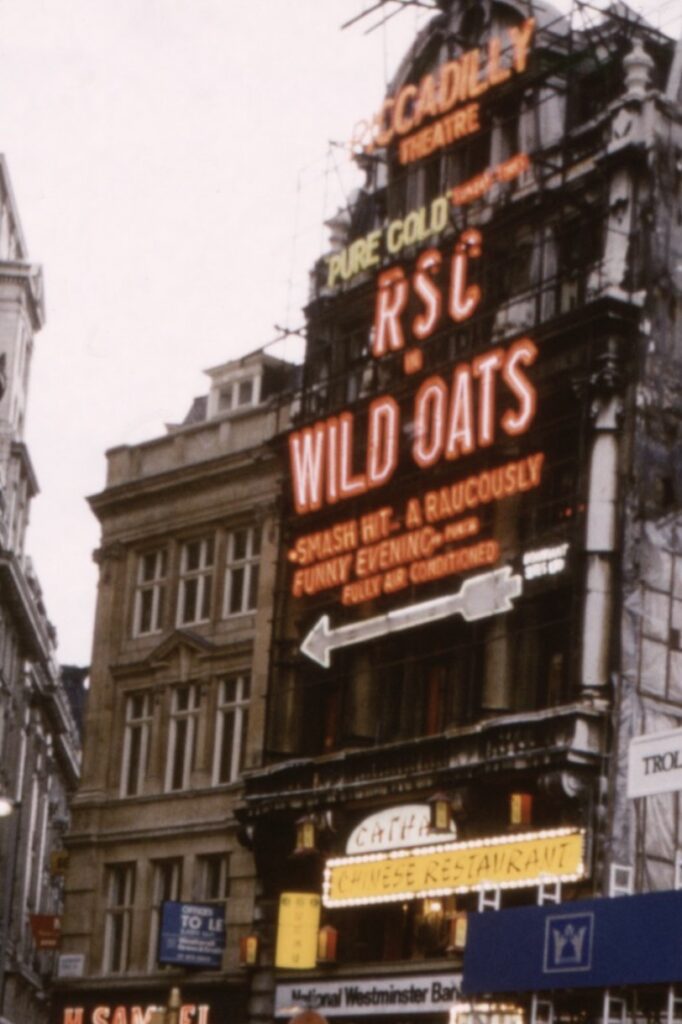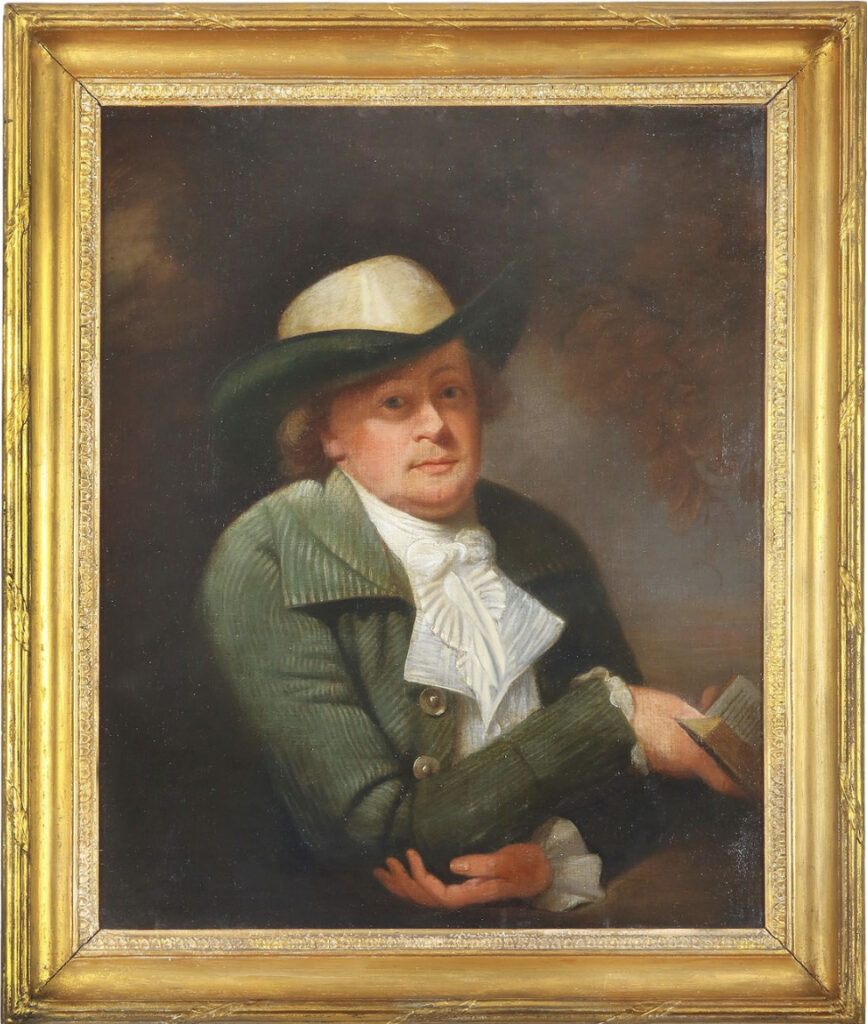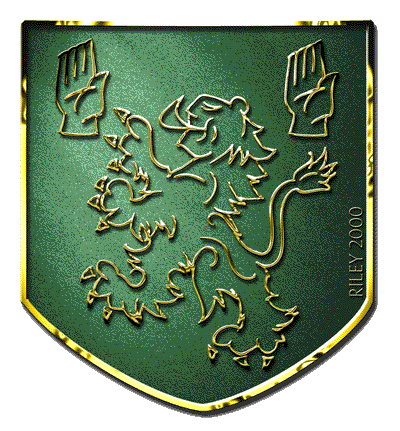Surname | Coat of Arms | Kings | Castles | Gathering | Articles | Notables
John O’Keeffe (1747–1833)
The Blind Playwright
by Lynda O’Keeffe
http://www.lyndaokeeffe.com
18th century London was never going to be an easy place for a blind Irish playwright to prosper and thrive …
Introducing John O’Keeffe, a man who in his own time needed no introduction at all – one of the most prolific and significant playwright of the 18th century. With works including operas, comedic farces, and poetry, he could be called the Andrew Lloyd Webber of Georgian theatre.
John O’Keeffe’s story is one of survival and success in the face of adversity.
He was born in Abbey Street, Dublin on 24th June 1747 into an affluent Catholic family; his father held an office of Prerogative and was a descendant of the Kings of Ireland.
Being born into a life of privilege ensured a fine education, so John attended school in Dublin and soon became a Classics scholar proficient in four languages. Upon his parents’ own desire for their sons to become artists, John and his brother Daniel were sent to the Royal Academy of Art in the city. John’s skill with a paintbrush led to numerous commissions in both portraiture and landscape, but little did he foresee that the observational skills he learnt at the RAA would in the future be his treasured and most invaluable tools.
In 1761, John visited London and upon seeing David Garrick perform was mightily impressed. Unbeknown to the fourteen-year-old John, this was to be the catalyst behind his life choices. He went on to study at Trinity College Dublin, a bright young man with a character described as forever merry and good hearted. He was the life and soul of the party with a fine singing voice, a quick humour and a kindly disposition, and he was considered a man of principles. By this time he was already a published writer, flooding the newspaper editors’ desks with his poetry and amusing stories, forever using the pseudonyms of his classical heroes – Democritus was a favourite.
After completing his education, John decided upon a career change and became an actor, a strolling player travelling the length and breadth of Ireland. However, after a raucous night out with friends in Dublin, the twenty-two-year old thespian fell into the River Liffey, a watery accident that resulted in a rapid deterioration of his sight, with complete blindness setting in some eight years later.
With his acting career now thwarted, the indefatigable John turned his skills to playwrighting. His first play, The She Gallant, became a roaring success in Dublin, and he and his young family decamped to London to find fame and fortune.
London soon recognised John’s brilliance and he became one of the most prolific and significant playwrights of the 18th century, writing for the Theatre Royals of Covent Garden and the Haymarket. His portfolio totalled above seventy-nine pieces, and between 1778 and 1798 fifty-seven of his plays, amounting to over two thousand performances, were performed on the London stages.
He was the epitome of celebrity, enjoying royal patronage from King George III and the royal family, and lauded and praised by his illustrious friends and peers, including Richard Brinsley Sheridan, Sarah Siddons, Charles Macklin, Elizabeth Inchbald, Kane O’Hara, William Shield and Oliver Goldsmith. The finest actors, actresses and musicians of the 18th century performed in his works, with Dorothea Jordan, William Lewis, Ann Catley, Michael Leoni and Mrs Powell to be found on the cast lists. He was adored and courted by both society and the public.
But while John’s career was rising to exalted heights, his personal life was crashing down around him. His professional and private lives were on a collision course, and despite reaching the pinnacle of success as a writer, he was ravaged by tragedy and loss. If losing his sight at age thirty was not enough, his first child Gerald died in infancy, his marriage to Mary (née Heaphy) failed, he lost another son Henry at age ten years, and his brother Daniel died in 1787. The final nail in this ‘mental crucifixion’ was the death of his eldest son, the Reverend John Tottenham, at the age of 28 years.
Throughout all these tragedies, with his daughter Adelaide as scribe, John continued in his work, turning out operas, farces and poetry to enchant and amuse his audiences – even whilst his own heart had been blown wide open. A quote from his memoirs, Recollections of the Life of John O’Keeffe, displays his actions behind his broken human heart:
‘The effort to be envied, rather than pitied,
often proves a successful stimulus to the greatest actions of human life.’
John’s blindness was a major contributing factor to many of his personality traits, influencing how he reacted to the events that befell him. His character could change in the blink of an eye; from being introverted and often reclusive, he would almost instantly become exuberant and flamboyant. He suffered with bouts of depression, anxiety, and vulnerability, yet demonstrated confidence and enthusiasm when putting pen to paper and creating his theatrical masterpieces. The theatre was his utopia.
And even while beset with his own tragedies, this man of principles maintained a strong social conscience. He was a champion and advocate for gender equality, female authorship, and the abolition of slavery – and he never missed an opportunity to express his own thoughts through his work. His example in and commitment to socio-political issues remain as relevant to modern times and resonate loudly with current equality movements and issues of modern slavery and human trafficking, immigration, and world poverty.
From the many pieces John wrote, the most famous over time has been Aladdin and His Wonderful Lamp. In 1788 (pre-dating Disney by over 230 years) John dramatised the story of Aladdin as a harlequinade, with its first performance on the stage of the Theatre Royal Covent Garden – it having had resounding worldwide success since.
John’s play Wild Oats, first performed in 1791, remains a popular choice with modern theatre companies: hugely successful productions were staged in 1976 by the Royal Shakespeare Company, with a cast including Zoë Wanamaker, in 1997 by the National Theatre, and in 2012 by the Bristol Old Vic. On this note, I will end John’s story with a review of the RSC production by Bernard Levin:
‘With “Wild Oats” the RSC have struck gold and oil at once, and rubies and diamonds to the utmost profusion, mingled with vintage champagne, lightly chilled, caviar is there…
A farce by an altogether forgotten Irish born man of the theatre.’

John O’Keeffe died in Southampton on 4th February 1833 in poverty, with only four people attending his funeral, somewhat forgotten too at the end of his own life after so many years feted in the spotlight. Remember him next time you see the posters going up for a Christmas production of Aladdin.


